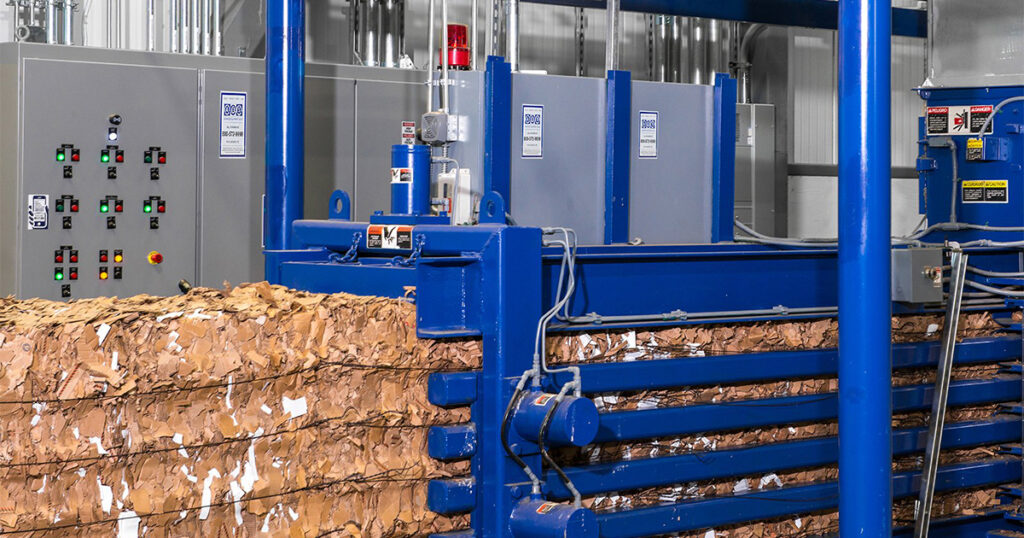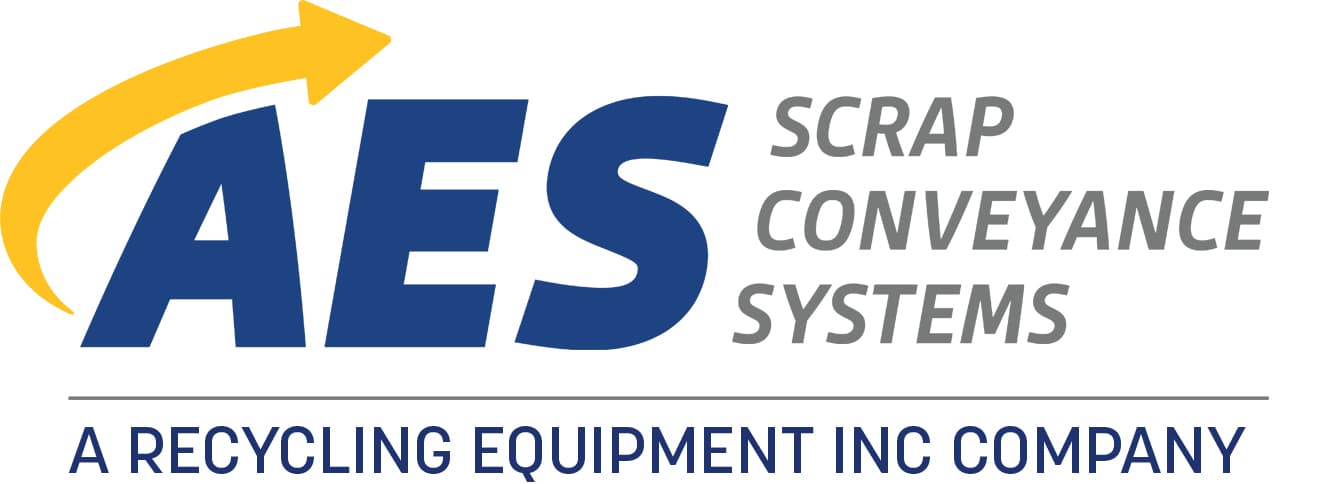
The efficient management of waste and recyclable materials is a critical consideration for businesses of all sizes. One key component of this process is properly installing and maintaining baling equipment. Your baler is essential to your workflow, which means that you must ensure installation goes smoothly and that your baler is always working at peak performance.
Let’s explore what you need to do to prepare for the installation of your baler, how to begin the start-up process, and why you need to maintain your baling equipment.
How to Prepare for Baler Installation?
Once you’ve determined the right baler for your needs, you must plan and prepare for installation. Baler delivery times can vary widely, ranging from a few weeks for a used piece of equipment to many months for new balers, so it’s crucial to make the most of this time to get everything in order. Careful planning and preparation are essential for a smooth, successful baler installation. Here’s how to prepare:
- The first step is to ensure the proper electrical supply for your new baler. Most industrial balers operate on three-phase electrical power. Consult with your baler manufacturer, electrical contractor, or utility company to determine the circuit requirements. Plan this well in advance, especially if additional service from the utility company is needed.
- Carefully select the location for your baler installation, considering factors such as existing equipment integration, access to storage areas, floor suitability, delivery method for incoming materials, maintenance access, and proximity to loading docks. The installation site must also support efficient material handling to and from the baler.
- Depending on the baler size and type, you may need a reinforced concrete slab, special foundations, or floor pit. Consider the ambient temperature at the installation site and make appropriate provisions, such as oil coolers or oil tank heaters, to ensure the baler operates optimally.
- Plan to install brightly painted bollards and guardrails to safeguard your baler against damage from loaders and forklifts, especially in high-traffic areas, around hydraulic cylinders, and other accessories extending from the baler frame.
- If you’re arranging freight for the baler, collaborate with a freight broker experienced in shipping machinery. Consider loading and unloading conditions, freight insurance, regulations on oversized loads, and whether to opt for a dedicated truck or less-than-truckload (LTL) shipping.
- Always entrust the unloading and rigging of your baler to professionals with experience, the right equipment, and adequate insurance. Walk through the installation site with your rigger in advance to address potential obstacles and clearance issues.
What Occurs During Baler Installation and Start-Up?
Now that your preparations are in place, it’s time to move on to the installation and start-up of your baler.
Baler installations should be performed by experienced professionals with factory training on your specific baling equipment. Confirm the scope of installation in your contract, understand the involvement of other trades like electricians and mechanical contractors, and determine who will coordinate the various activities.
Before starting your baler, ensure you have a sufficient supply of materials for baler start-up and testing. The manufacturer or supplier can guide you on the amount required. For best results, avoid breaking bales and re-baling the same materials during this process, instead opting for an adequate supply of “virgin” material to ensure a swift and efficient start-up.
How to Perform Baler Maintenance & Preventative Care?
Regular maintenance and preventative care are vital to keep your baler running smoothly. Regular maintenance helps identify and correct minor issues before they escalate into significant problems, ensuring your equipment lasts longer and operates efficiently. It also saves on repair costs and keeps your operation moving.
The starting point for any effective maintenance and care routine starts with maintaining cleanliness around your baler. This is essential to prevent fire hazards, oil contamination, and overheating. Paper and dust build-up on sensors and oil coolers affect safety and efficiency, as can material build-up behind the ram. Periodically check the hydraulic system (particularly hoses), analyze hydraulic fluid, and monitor bale density and weight. It’s best to set up a routine cleaning, inspections, and preventive maintenance schedule to ensure proper operation.
Daily, weekly, monthly, and annual guidelines help operators and maintenance personnel keep the baler in top shape. Baler manufacturers typically provide a maintenance schedule and recommended spare parts list in the manual. The frequency and types of periodic maintenance are tied to machine running hours. A baler that runs for three shifts seven days a week will require more frequent maintenance than one that operates for one shift five days a week.
IMPORTANT: Never attempt to do any maintenance or cleaning to a ‘live’ powered or running machine. Proper lock-out/tag-out procedures for controlling hazardous energy, confined space entry protocols, and other safety measures must be followed, and only qualified baler technicians or trained maintenance staff should perform baler maintenance or repairs.
Taking a ‘safety first’ approach is essential to protect staff and prevent accidents, equipment damage, and poor performance.
Choose an equipment provider that offers operational and safety training for your staff operating and maintaining the baler.
And lastly, don’t wait for problems to arise before ordering common wear parts. Keeping recommended spares on hand can help you or your service provider quickly address equipment breakdowns or part failures.
Reduce Unnecessary Downtime with Qualified Maintenance Vendors
Your scrap handling and baling equipment is central to your daily operations. Baler downtime is the enemy of your production schedule, reducing or even shutting down the manufacturing process. Prolonged downtime can result in lost productivity, profits, and customer satisfaction.
Efficiently addressing downtime includes not only fixing the immediate issue but also preventing future disruptions. It means understanding the root causes of downtime and taking proactive steps to reduce the likelihood of recurrence. For baling equipment, downtime might result from various factors, such as wear and tear, technical issues, and inadequate or deferred maintenance.
Deferred maintenance can lead to:
- Breakdowns
- Increased repair costs
- Reduced productivity
- Customer dissatisfaction
- Safety issues
One of the most effective ways to minimize downtime and address issues efficiently is to work with qualified vendors for preventive maintenance and repairs. Look for vendors with technical service staff that have been factory-trained on your specific equipment. A qualified baler technician will know how to troubleshoot problems, source parts, and supplies, and repair the equipment to factory specifications. This minimizes the duration of downtime and its associated costs.
Beyond fixing immediate issues, qualified vendors can establish preventative maintenance schedules. Regular maintenance checks can identify and correct potential problems before they lead to significant damage or equipment breakdowns. This proactive approach is critical in minimizing disruptions to your baling operations and production schedule.
A qualified baler service company can tailor maintenance solutions to suit your specific needs. Every baling equipment setup is unique, and you should consider your equipment, its usage, and your production environment to develop a maintenance plan that works best for you.
Some vendors even offer emergency breakdown services around the clock. This is especially important if your operations run 24/7 or during weekends and holidays. Quick response during unexpected failures is crucial to minimize losses.
Your Full-Service Baling Partner
For comprehensive support and guidance throughout your baling equipment journey, AES is here to help. From equipment selection through system design, installation, start-up and commissioning, and after-sale maintenance and service, AES is your single-source solution for your scrap collection and baling needs. Contact us for personalized assistance.
